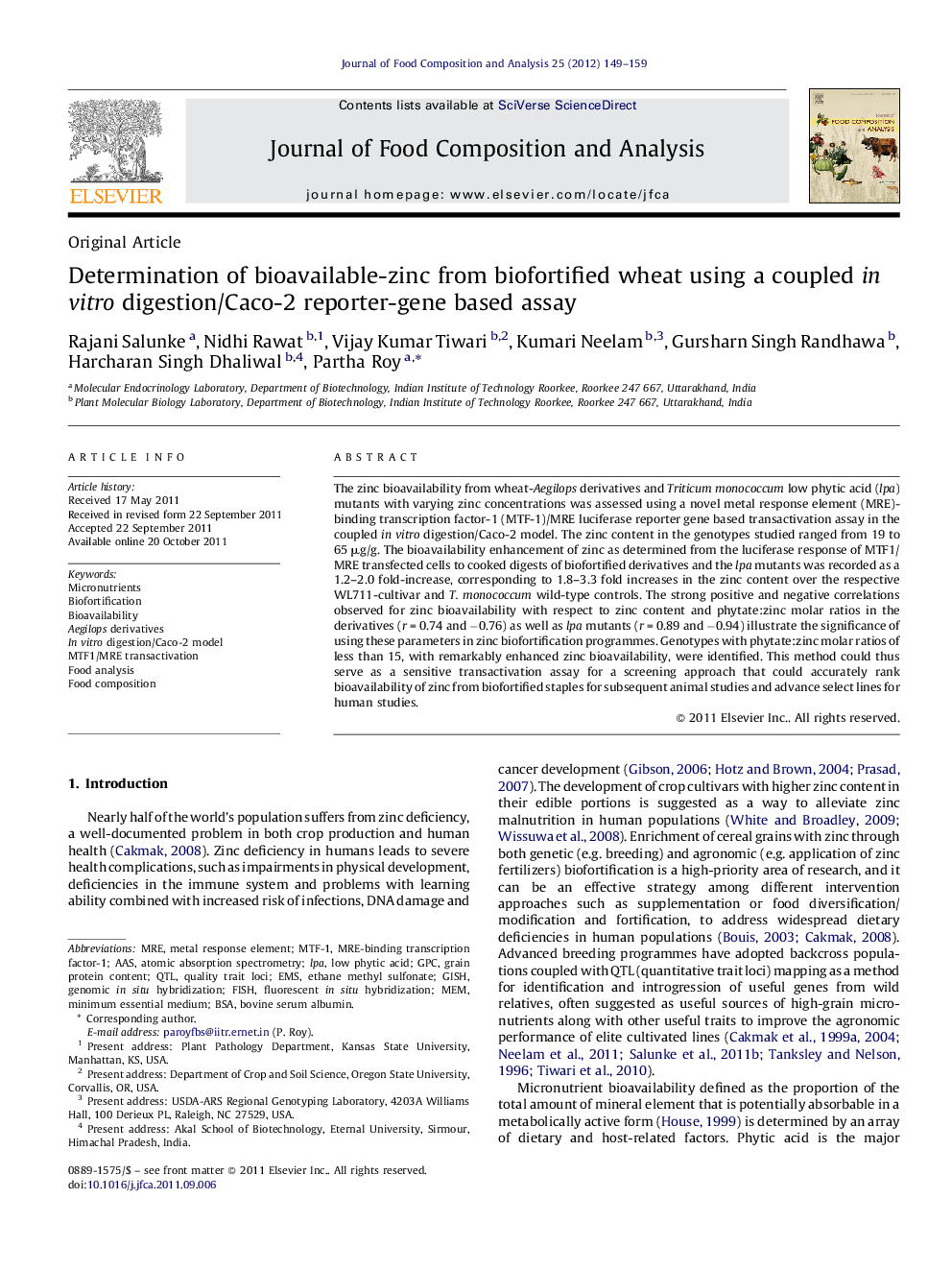| کد مقاله | کد نشریه | سال انتشار | مقاله انگلیسی | نسخه تمام متن |
|---|---|---|---|---|
| 1218580 | 967615 | 2012 | 11 صفحه PDF | دانلود رایگان |

The zinc bioavailability from wheat-Aegilops derivatives and Triticum monococcum low phytic acid (lpa) mutants with varying zinc concentrations was assessed using a novel metal response element (MRE)-binding transcription factor-1 (MTF-1)/MRE luciferase reporter gene based transactivation assay in the coupled in vitro digestion/Caco-2 model. The zinc content in the genotypes studied ranged from 19 to 65 μg/g. The bioavailability enhancement of zinc as determined from the luciferase response of MTF1/MRE transfected cells to cooked digests of biofortified derivatives and the lpa mutants was recorded as a 1.2–2.0 fold-increase, corresponding to 1.8–3.3 fold increases in the zinc content over the respective WL711-cultivar and T. monococcum wild-type controls. The strong positive and negative correlations observed for zinc bioavailability with respect to zinc content and phytate:zinc molar ratios in the derivatives (r = 0.74 and −0.76) as well as lpa mutants (r = 0.89 and −0.94) illustrate the significance of using these parameters in zinc biofortification programmes. Genotypes with phytate:zinc molar ratios of less than 15, with remarkably enhanced zinc bioavailability, were identified. This method could thus serve as a sensitive transactivation assay for a screening approach that could accurately rank bioavailability of zinc from biofortified staples for subsequent animal studies and advance select lines for human studies.
► Coupled in vitro digestion/Caco-2 luciferase reporter-gene based assay was developed.
► This assay could be used for screening biofortified staples for zinc bioavailability.
► Wheat genotypes with phytate:zinc molar ratios of values less than 15 were identified.
► Zinc bioavailability correlated positively with zinc content.
► Bioavailability of zinc correlated negatively with the phytate:zinc molar ratios.
Journal: Journal of Food Composition and Analysis - Volume 25, Issue 2, March 2012, Pages 149–159